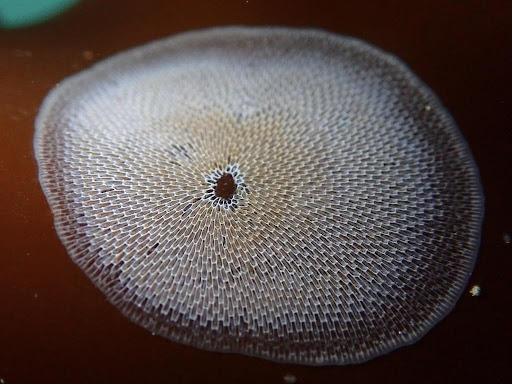The Coffin Box Bryozoan is a marine organism that consists of tiny (< 1 mm in length) individual filter-feeding invertebrate animals. They are ‘coffin’ shaped, and live in encrusting circular colonies of hundreds to thousands. These colonies can reach 10 cm or more in width.
Coffin Box Bryozoan usually grows in shallow subtidal water with strong currents, to depths of up to 10 m. Colonies grow on the surface of kelp and seaweeds, rocks, boat hulls, and other underwater surfaces. They are especially detrimental to kelp forests, which are otherwise known to be highly productive marine habitats. Coffin Box Bryozoan can starve kelp by absorbing nutrients, blocking light needed for photosynthesis, and reducing the kelp’s ability to release reproductive spores.
Coffin Box Bryozoan first appeared in Nova Scotia in the early 1990s. It spreads mostly in the larval phase, when it can be easily picked up in ballast water. It has also been known to raft to new locations on dislodged kelp and drift plastic.



Rounded colonies made of tiny ‘coffin’ shaped individuals.



Coffin Box Bryozoan causes kelp to become brittle, which leads to defoliation in extremely wavy conditions.
To reduce the spread of Coffin Box Bryozoan, regularly clean and disinfect boats and boating gear. Avoid transporting water between locations. If you spot this invasive species, report the location to iNaturalist, or directly to the NSISC.
Join our mailing list.